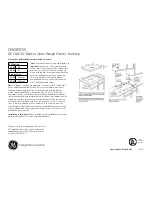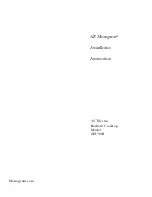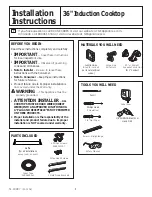
OPERATING INSTRUCTIONS
READ ALL INSTRUCTIONS BEFORE USE
About Sous Vide Cooking
Sous vide has long been a popular cooking method with professional chefs.
“Sous vide” is French for “under vacuum”. It describes a cooking method in
which food is placed in sealed vacuum bags and cooked in a water bath. The
food is cooked at a constant low temperature over a long time to make it
moist and flavorful. As the vacuum bag is sealed, the food cooks in its own
juices together with the marinades or spices you added. Vitamins, minerals
and juices are retained and the flavor of the food is enhanced. This makes
the food healthier, more tender and more flavorful. As meat cooked sous
vide is more tender, it is possible to use cheaper cuts, such as neck fillet,
shank and shoulder, which are often tastier than the more expensive cuts.
As sous vide cooking requires that foods be vacuum packed individually,
several items can be cooked at the same time, as long as their cooking
temperature is the same. It is difficult to overcook food with sous vide,but
the structure of the food can change slightly during cooking.
Foods for Sous Vide Cooking
Meat is particularly suited to sous vide cooking,as it makes it more tender,
juicy and flavorsome, but vegetables and fish can also be cooked in this way.
We recommend sous vide cooking for the following foods:
• Beef, veal, lamb, pork and game
• Chicken, turkey and duck
• Lean and oily fish, lobster tails and scallops
• Root vegetables such as potatoes, carrots,parsnips, beetroot and turnips
• Crisp vegetables such as peas, asparagus,corn, broccoli, cauliflower,
aubergines, onions and squash
• Hard fruits such as apples and pears
• Soft fruits such as mango, plums, apricots,peaches, nectarines, papaya and
strawberries
Temperatures
The appliance has a temperature range of 115-195 °F in increments of 1
°F. Different temperatures are required for different foods and different
degrees of doneness. Refer to the chart on the next page for appropriate
temperature and time selection for meat being cooked.
pg 3
NOTE: * If the meat is thinner than specified, it will cook faster.
** The standing time is the longest time the food can remain in the water after
cooking without the structure changing.






























